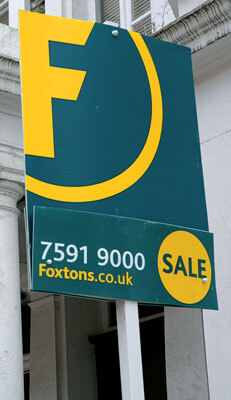Brands for sale
Now the economy is out of intensive care, brand acquisition activity is picking up again. Already this year Johnson & Johnson has flirted with Korres, a bidding war has broken out over niche retailer Cath Kidston, and Avon has drawn on its enviable cash reserves to snap up online skincare star Liz Earle.
Right now, three more interesting brands are on the auction block, primed to attract ambitious buyers that believe they can take them to the next level. Jones Bootmaker is looking for bids in excess of £40m, Citigroup subsidiary Egg is ready for new ownership, having been off-loaded by Prudential just three years ago for £575m, and Wagamama has revived the sale plans it put on hold in 2007, when the faltering economy stymied its hopes for a minimum £250m price tag.
Just as consumers pay more for brands than they would for a generic product, so acquirers pay a brand premium, over and above the notional value of a business. The question is, what is the brand asset worth? In the heat of the bidding, a cool assessment of a brand’s potential is vital – but the fluid, beguiling nature of brands makes such quantification hard.
Kevin Keller’s 10-point brand health checklist, first published in Harvard Business Review in 2000, is a good place for prospective buyers to start. It highlights the need to evaluate such fundamentals as ‘delivering the benefits customers truly desire’, and ‘brand consistency’.
Since growth is the aim for acquirers, here are three additional questions that should feature on any potential buyer’s brand audit.
First, does the brand tap into a growing cultural trend? Wagamama scores here, for the healthiness of its Japanese-style cuisine. With obesity an issue across the developed world, the appeal of healthy satiation is one that can only get stronger. While any chain with a similar menu could claim healthiness, Wagamama has captured it in its brand vernacular, with clean, fresh interiors, and the symbolic openness of its kitchens.
Second, could the brand move into adjacent market space? Again, easy enough to imagine Wagamama ready meals in the chill cabinet, to follow on from its supermarket sauces. Conversely, even though Egg has 2m customers and some potential for cross-selling, this is something even the strongest financial brands have struggled to pull off – and an FSA fine for miss-selling insurance in 2008 doesn’t exactly help. As for Jones, the ‘Bootmaker’ appendage does rather nail its colours to a single mast.
Third, could the brand have global appeal? Wagamama already has 39 overseas outlets, including a toehold in the US. Egg and Jones appear marooned as UK brands, though the latter could broaden its reach online.
There is one more question worth asking, simply because it approaches the concept of ‘brand’ at the same intuitive level that consumers do: if this brand didn’t exist, would you invent it?
In the age of banking fragility, and growing concern over hackers, would you invent a quirky internet bank? Doubtful. On our embattled high streets, would you invent a very British designer footwear retailer? Maybe.
Given the blandness of the typical concept-restaurant experience, would you create a fresh, sassy, Eastern/fusion brand, with bright, optimistic interiors and long tables that bring people together? For sure. There might be sound business reasons for buying Egg or Jones – EBITDA growth, proprietary technology, real-estate assets – but for brand appeal there is only one winner, and it’s going for about £230m.
Like all decisions that involve an element of risk, there are plenty of ‘bad decision’ stories in the history book of brand acquisition.

Foxtons sold for £390m in May 2007
Friends Reunited Last year ITV finally sold its ‘foot in social networking’ for £25m, having bought it four years earlier for £175m. An early success, Friends Reunited was quickly eclipsed by MySpace, Facebook and Twitter, and ITV didn’t have the focus (or, perhaps, the skills) to compete with these social networking specialists and innovators.
Faith John Kinnaird and the investment fund Agilo bought women’s fashion shoe-retailer Faith out of administration for an undisclosed sum in September 2008. By April 2010 it was back in administration again, crippled by its debts.
Foxtons With its branded Minis, and in-your-face presence, Foxtons was the estate agent that came to symbolise the heady years of the property boom. Dazzled by its glitzy profile, private equity firm BC Partners splashed out a staggering £390 million to acquire Foxtons in May 2007 – just before boom turned to bust.
Snapple Quaker bought Snapple in 1994 for $1.7bn. three years later, it sold the brand to Triarc Company for $300m – a price many analysts felt was generous.
